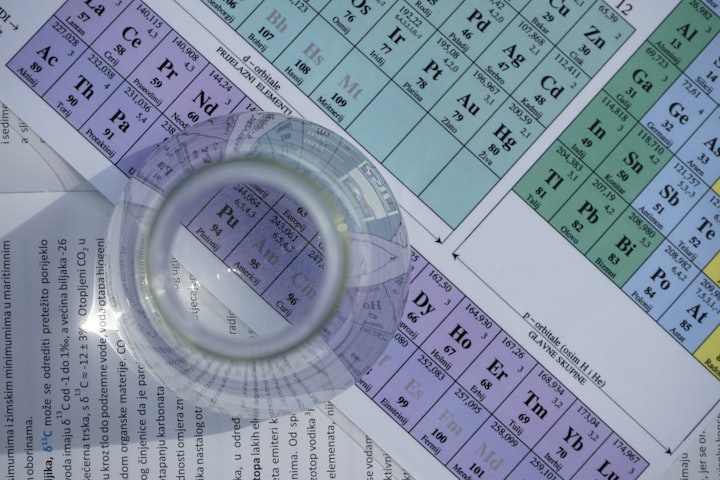
1. Introduction to the Periodic Table
A periodic table is a fundamental tool in the study of chemistry that arranges the elements in an organized manner based on their atomic structure and chemical properties. It is a periodic table because the elements are arranged in a way that reflects the periodic nature of their properties, such as their atomic weight and valence. The periodic table is a crucial resource for chemists, as it allows them to predict the properties of an element based on its position within the table. It also allows chemists to classify elements, which helps to identify patterns and trends in their properties. The periodic table has undergone numerous revisions and updates over the years, as new elements have been discovered and our understanding of the atomic structure of the elements has improved. Today, the periodic table includes 118 known elements, each with its unique properties and applications.
2. The History of the Periodic Table
The periodic table is a chart that organizes elements according to their properties. The modern periodic table is based on the arrangement of elements proposed by Russian chemist Dmitri Mendeleev in 1869. Mendeleev noticed that when the elements were listed in order of increasing atomic mass, certain patterns emerged. He used these patterns to arrange the elements into groups and create the periodic table.
Before Mendeleev, several scientists had attempted to classify the elements. One of the earliest attempts was made by French chemist Antoine Lavoisier, who published a list of elements in 1789. However, it was not until the 19th century that the periodic table began to take its modern form.
In the early 1800s, English chemist John Dalton proposed a theory of atomic weights and suggested that the elements could be arranged in a table based on their atomic weights. However, Dalton's table was unsuccessful because it did not consider last the six groups' elements as the properties of the elements.
Mendeleev's periodic table was a breakthrough because it organized the elements in a way that revealed their relationships and showed their periodic trends. Mendeleev was able to predict the properties of elements that had not yet been discovered based on the properties of the elements around them in the periodic table.
The periodic table has undergone several changes since Mendeleev's original version. In 1913, Henry Moseley discovered that the elements could be arranged in order of increasing atomic number, which is the number of protons in the nucleus of an atom. This led to the modern periodic table, which is based on atomic number rather than atomic weight.
In the years since the periodic table was first proposed, many new elements have been discovered and added to the table. Today, the periodic table consists of 118 elements, including the recently discovered elements 113, 115, 117, and 118. The periodic table continues to be an important tool for scientists, as it helps them understand the properties of the elements and predict how they will behave in different circumstances.
3. Grouping the Elements: Periods and Families
In chemistry, the elements are organized into groups based on their properties. One way to group the elements is by their location on the periodic table, which is a chart that arranges the elements according to their atomic number (the number of protons in the nucleus of an atom), electron configuration, and recurring chemical properties.
The periodic table is divided into rows, called periods, and columns, called families or groups. The elements in a given period have the same number of electron shells, but the outermost electron shell is progressively filled with electrons as you go from left to right across the period.
The elements in a given family or group have the same number of valence electrons (electrons in the outermost shell of an atom), which gives them similar chemical properties. The elements in a group tend to have similar reactivity and other chemical properties.
There are seven periods on the periodic table, and each period is divided into many families or groups. The elements in the first two groups are called alkali metals and alkaline earth metals, respectively. The elements in the next six groups are called transition metals. The elements in the last six groups are called metalloids, nonmetals, and noble gases.
Understanding the periodic table and how the elements are grouped helps chemists predict and understand the chemical behaviour of different elements and compounds. It also helps chemists to design new materials and compounds with specific properties
4. Physical and Chemical Properties of the Elements
The elements are the building blocks of matter. They are substances that cannot be broken down into simpler substances by chemical means. Each element has a unique set of physical and chemical properties that distinguish it from other elements.
Physical properties are characteristics that can be observed or measured without changing the identity of the substance. Examples of physical properties include density, colour, melting point, and boiling point.
Chemical properties are characteristics that describe how a substance reacts with other substances. Examples of chemical properties include flammability, reactivity with acids, and the ability to rust.
The periodic table is a chart that arranges the elements in order of increasing atomic number, which is the number of protons in the nucleus of an atom. The periodic table is organized in such a way that elements with similar physical and chemical properties are grouped. For example, the alkali metals (group 1) are highly reactive and have low melting points. The alkaline earth metals (group 2) are also reactive, but not as much as the alkali metals. The transition metals (groups 3-12) are known for their high melting and boiling points, and their ability to form multiple oxidation states. The noble gases (group 18) are unreactive and have low boiling points.
Understanding the physical and chemical properties of the elements is important in a variety of fields, including chemistry, engineering, and medicine. It helps us to predict how substances will behave under different conditions and to design materials and products that have the desired properties.
5. Real-World Applications of the Elements
The elements are the building blocks of matter, and they have a wide variety of real-world applications. Here are a few examples:
- Carbon: Carbon is an element that is essential for life on Earth. It is found in all living things and is the basis for the structure of proteins, DNA, and other biological molecules. Carbon is also a key component of many industrial materials, including plastics, rubber, and steel.
- Hydrogen: Hydrogen is a light, highly flammable gas that is used as a fuel in many types of transportation, including cars, buses, and aeroplanes. It is also used in the production of chemicals, such as ammonia and methanol, and the purification of water.
- Oxygen: Oxygen is a highly reactive element that is necessary for the survival of most living organisms. It is found in the air we breathe and is used by cells in the body to produce energy through the process of respiration. Oxygen is also various industrial processes, such as welding and steel production of steel.
- Nitrogen: Nitrogen is a chemical element that makes up a large part of the Earth's atmosphere. It is an essential component of proteins, DNA, and other biological molecules, and it is also used in the production of fertilizers, explosives, and other industrial materials.
- Chlorine: Chlorine is a highly reactive element that is used in a variety of applications, including the production of bleach, the purification of water, and the manufacture of plastics and other chemicals. It is also used as a disinfectant in swimming pools and other recreational water facilities
About the Creator
shammu
I am a content writer at freelancer and have been working in this field for the past few years. I always put my best efforts to deliver quality work. I am very hardworking, honest, and dedicated to my work.






Comments
There are no comments for this story
Be the first to respond and start the conversation.